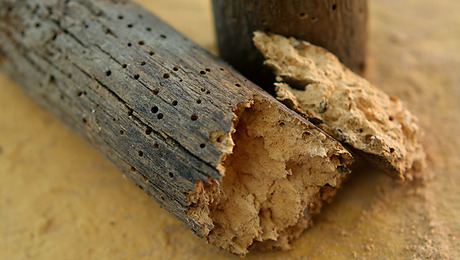I am down to my last foot or so of 50-50 solder. It takes a long time to use up a roll when a “big” plumbing job for me involves 10 or 12 joints. More typically a plumbing job for me involves replacing a couple of shut-off valves under a sink.
Decided that yesterday was the day to finally go legal and switch to lead free solder.
Bought a MAPP gas torch, flux, a roll of 95-5 solder and a roll of silver solder.
Played with some copper pipe scraps and fittings using the two different solders. I do not see a great deal of difference in how the two solders handle, melt or flow into the joints. I had no problem getting either one to behave for me.
So what is the difference? Edumacate me please!
I feel sure there are places where one or the other is superior, but have no clue as to what those applications are.
I am just looking for a 50-50 replacement for plumbing applications using 1/2″ or 3/4″ Type L copper. A very occasional use involves sweating soft copper tubing in plumbing applications only – no refrigerant lines.
Thanks in advance,
Jim


















Replies
I thought 95-5 WAS silver solder. 50-50 is lead/tin solder which is no longer legal for potable systems, due to lead poisoning.
Save your old 50-50 for non plumbing jobs, and use the 95-5 stuff. You also should use the right flux too. MAPP is fine also.
There are several different mixed used for non-lead solder.Some use a SMALL amount of silver. One packages that I have seen use the term Silver Bearing.But it is not silver solder.True silver solder is a much higher temperature melting than plumbing solder.For the OP the only way to find the difference is if tyou can get the manufactures spec or the full alloys and look them up. There are several characteristics. Melting temp, plastic range, and wetting properties.But they are all for the same purpose and have somewhat similar characteristics..
.
A-holes. Hey every group has to have one. And I have been elected to be the one. I should make that my tagline.
Really how much of a risk are you at from lead poisoning I bet 50% of the houses in north americal still have copper pipe with 50/50 solder. I think you have a better chance of dying from other causes like from the new kid on the block plastic (Ya right). Why is it that we use something for decades and then all of a sudden go it is going to kill us.
I suspect a good deal of the "threat" stems from our relatively new found ability to measure things in parts per trillion.
The ability to measure discloses the mere presence of compounds known to be nasty in one way or another - panic follows.
Kind of like all that arsenic in CCA treated wood............
JimNever underestimate the value of a sharp pencil or good light.
Oatey Silver solder......
Got really curious - read the roll label very carefully - found out that what I have is actually Oatey SAFE FLO SOLDER.
Went to Oatey web site - found out from the MSDS that Safe Flo is a somewhat variable alloy compounded as follows:
60 - 100% Tin
1 - 5 % Copper
1 - 5 % Bismuth
1 - 5 % Silver
So I guess this puts it in the "silver bearing" catagory. Kind of misleading as the only metal notation on the spool is "silver".
Thanks again,
JimNever underestimate the value of a sharp pencil or good light.
I thought it was a little strange.
The Oatey roll says just "silver" no "silver bearing" also no alloy notations. I know it does not contain much silver since an 8 oz roll sells for under $13.
The 95-5 roll is very specific as to alloy content --- 95% tin and 5% antimony.
JimNever underestimate the value of a sharp pencil or good light.
They don't give the ratios but if you go to the product and then submittle sheets the Oatey Silver Lead free solder hasAlloy composition Tin, Copper, Bismuth, Silver
Appearance Silver Solid Wire
Melting Range 420░ F to 460░ FBut they don't give percentages.For the 95-5
copy and paste did not work but it is
Tin and AntimonyAnd the melting range is 450 - 464The also have an Instant Lead Free Solder.It is a flux paste with bits of solder in it.the alloy is tin, copper, bismuthBTW, there are still many lead pipe supply lines in use. They have been tested and found not to be a problem in most waters as they have formed a passive coating.But now you need to replace all of your fixtures.http://www.roanoke.com/news/roanoke/wb/xp-29130.
.
A-holes. Hey every group has to have one. And I have been elected to be the one. I should make that my tagline.
You might be right ------ 95-5 = silver.
That would explain why I could not tell the difference between the silver and 95-5 in the way it worked for me!
Bought Oatey "No. 95 Lead Free Tinning Flux" for all lead free solders which contains some metal particles (tin, copper and bismuth) in the flux. Comes in a green can instead of the non-metal bearing No. 5 which is packaged in a red can.
This is pretty cool stuff for the occasional plumber - clean pipe, apply flux, assemble joint, heat ------ when the metal in the flux melts and spreads out - you know you are very close to temperature for solder application. Nice visual helper.
Little more expensive than their regular No. 5 flux for lead free solders. Expense is a non-issue - I consume a 1.7 oz. can in about 4 years.
I never felt even a tiny bit guilty using my "leftover" and "illegal" 50-50 solder on repair work. Somehow I do not believe my 1 or 2 repair joints would add an additional, even measurable (ppm or ppb), amount of lead to the water flowing through a whole house system which is already soldered with 50-50. Most homes which I work in are at least 20 years old and plumbed with copper supply lines which were soldered with 50-50.
Thanks.
JimNever underestimate the value of a sharp pencil or good light.